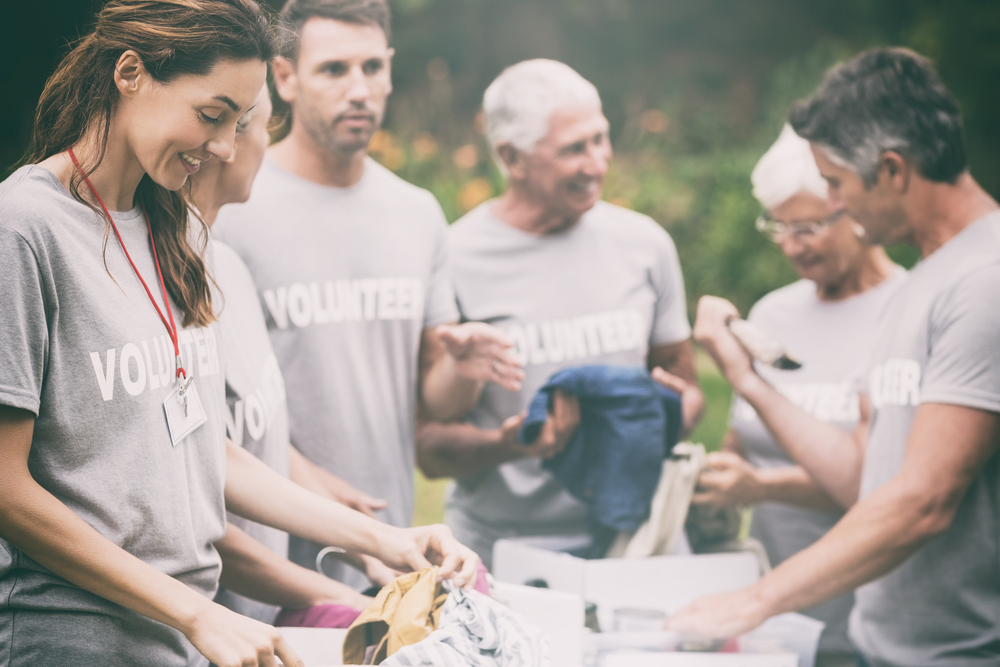Self-care is a new business trend these days – physical, financial, emotion, skin, mental, the list continues. The self-care being sold to us, however, is often focused on what we can do for ourselves – serums for our faces, calendar blocks carved out for me-time, apps tracking sleep and exercise. What gets left out of this wellness and self-care trend is that a fundamental characteristic for feeling good is doing things for other people too, not just ourselves.
It is scientifically proven that the act of giving releases endorphins and dopamine within the human brain, reaping more personal happiness than any act of receiving. However, a recent study suggests that it goes one step further. The brain reacts differently based on who we help. For example, giving to charity and to someone close to us both make us feel good and release good chemicals in our body. But, giving, or being generous, to an identifiable individual or source (someone you know, an organization you hold close to your heart, a loved one) may provide a unique health benefit by reducing anxiety and stress. Full disclosure: I’m the Chief Growth Officer at a corporate gifting technology. We work with clients that value building relationships through acts of generosity (recipients get to choose the gift they want and have the option to donate the gift to charity to ensure that no gift is wasted). But the reason I’m writing this isn’t because of where I work, I work with Loop & Tie because I was a customer long before I was an employee – and the company’s mission spoke to the core of how I was feeling.
It’s no secret that most people are searching for that dopamine hit our anxiety-ridden brains are craving. Between climate change and the continuous barrage of bad news on our feeds, and almost every day it feels like we are waking up to – well – a larger, more insurmountable crisis somewhere in the world. In the search to “feel better” we’re sold a host of rituals: meditation, plants, travel, and so on. But in this self-care quest, we’ve lost sight of the (scientifically proven) simple fact that the act of paying it forward (not just giving back) can create a ripple effect in our brains, and in our lives. In short: generosity is backed by science and is making a comeback.
Also, it’s science, and you can’t argue with science. (And in 2019, why would you want to? Wait don’t answer that.) Here are three ways to reap the feel-good-benefits of giving (right now, for that hit of dopamine we all need):
Send a Gift to Your Friend That is Hurting
Aside from “socially acceptable losses” such as a death, we aren’t privy to how hard life can be for others. (And it can be hard!) Times like: being a new parent, managing the illness of an aging parent, the loss of a job, an anniversary of a death/traumatic experience, a breakup, and more. A friend once told me that she was three months into being a new mom and was overwhelmed until she saw a tag on the baby’s blanket that said, “You’re doing great!” – and that tag got her through an almost-breakdown.
For these moments, sending a small gift, or even an email, can provide much-needed support. It’s the stepped-up version of a “how are you?” text. And it can make a huge difference.
Do Something Nice as a Monthly Practice
Much like a meditation or gratitude practice, create a monthly practice where you give to someone you know or love for absolutely no reason. Think of it as a random act of kindness, but for someone in your social circle. (Kindness: it doesn’t have to be random.) Sending them a small gift that pops up in their email is an easy way to start. (Tip: You can even schedule those gifts in advance, every month, with Loop & Tie. They can choose to donate their gift as well, taking the pay it forward moment even further.) Or send them a card in the mail. That way, each month, you’ll know that you’re making someone smile, and it’s not even their birthday.
Give something tangible, not just your money.
In recent years, “giving” became akin to sending money. Phrases like “venmo me” and “support my project” became so commonplace it felt like the only way to help anyone, was to send money. Yet, giving in such an impersonal manner doesn’t induce the “giving high” in the same way as giving in a tangible way, where you can see the impact of what you did. This doesn’t mean stop donating to your favorite charity – or your friend’s project – but it does mean that you can add in more immediate and tangible giving practices. For example, volunteer at your local shelter, or write letters to those in need of support, or buy the coffee for the person in line behind you. Whatever that small act, it goes a long way for the recipient and for yourself.
If we accept that people who give tend to have lower rates of depression and higher rates of self-reported happiness (which, again, science says is true), then it’s a pretty good reason for us to continue the tradition of giving. Think of it as self-care, without all that travel cost.


